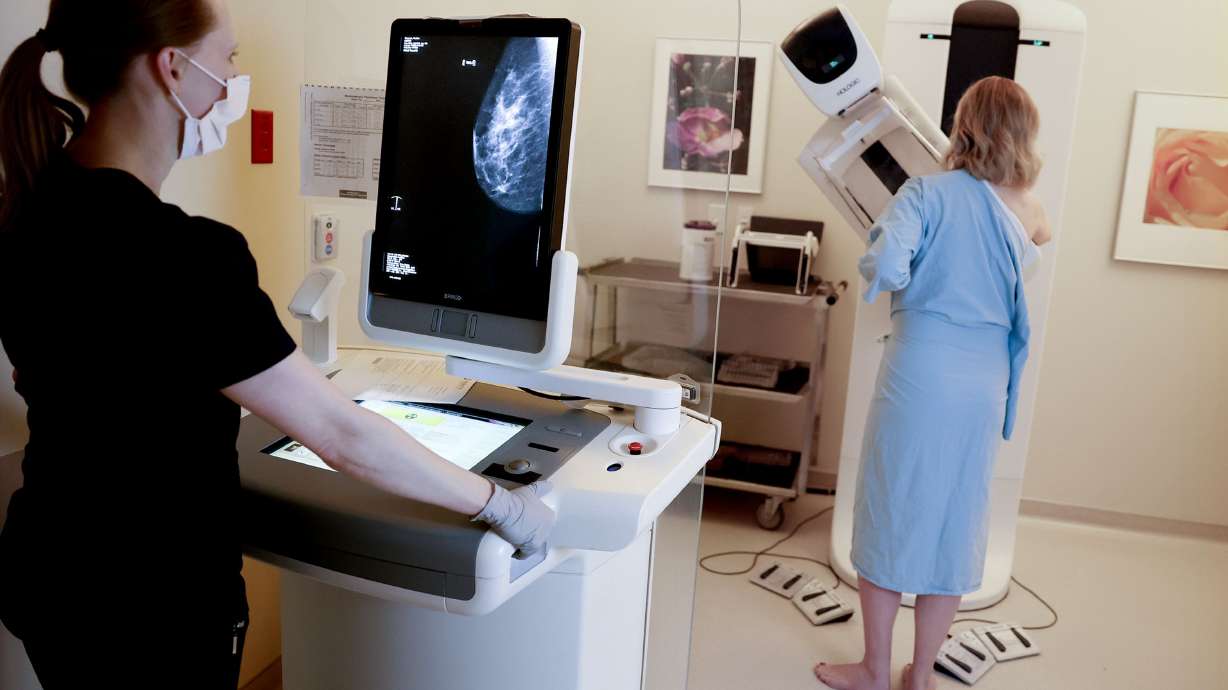Estimated read time: 3-4 minutes
This archived news story is available only for your personal, non-commercial use. Information in the story may be outdated or superseded by additional information. Reading or replaying the story in its archived form does not constitute a republication of the story.
SALT LAKE CITY — An ongoing Swedish study assessing the effectiveness of artificial intelligence tools in detecting early signs of breast cancer is producing results showing that computer-based scans are catching more warning signs, and doing it faster, than thier human counterparts.
But researchers warn AI, while safe and exhibiting a false positive rate similar to traditional radiologist readings of mammograms, isn't quite ready to replace medical professionals.
A study published Tuesday in The Lancet Oncology included results from scans of mammograms from 80,000 patients in Sweden in which half were reviewed by two-person teams of radiologists and half were reviewed by a radiologist after first being assessed by AI. The AI-assisted scans discovered 20% more early cancer signs, according to the study, and had a false positive rate — 1.5% — that matched that of the human-only mammogram readings.
The AI-assisted mammogram evaluations were also performed 44% faster than those done by the radiologist team.
The AI-supported screening found 244 women, 28% of the group, had cancer while the radiologist team discovered 203, 25%, with cancer signs.
"AI-supported mammography screening resulted in a similar cancer detection rate compared with standard double reading, with a substantially lower screen-reading workload, indicating that the use of AI in mammography screening is safe," researchers wrote.
'The greatest potential of AI'
The study's lead author, Dr. Kristina Lang, from Lund University in Sweden, said while the results were positive, it was too soon to place the responsibility of reading mammogram X-rays entirely with new AI-driven tools.
"These promising interim safety results should be used to inform new trials and program-based evaluations to address the pronounced radiologist shortage in many countries, but they are not enough on their own to confirm that AI is ready to be implemented in mammography screening," Lang said, per The Guardian.
"We still need to understand the implications on patients' outcomes, especially whether combining radiologists' expertise with AI can help detect interval cancers that are often missed by traditional screening, as well as the cost-effectiveness of the technology."
Lang also noted the biggest near-term benefit may be AI's ability to reduce the overall workload for radiologists when it comes to performing cancer diagnostics.
"The greatest potential of AI right now is that it could allow radiologists to be less burdened by the excessive amount of reading," Lang said.
'A tool like a stethoscope'
But experts are also pointing out that cancer detection involves more than the ability to accurately interpret the results of screening tests like mammograms.
Dr. Laura Heacock, a breast radiologist at NYU Langone Perlmutter Cancer Center, who wasn't involved with the new study, told CNN that a radiologist's job is a lot more than pattern recognition.
"If you spend a day with a radiologist, you'll see that how an AI looks at screening a mammogram is really just a fraction of how radiologists practice medicine, even in breast imaging," Heacock said. "These tools work best when paired with highly trained radiologists who make the final call on your mammogram. Think of it as a tool like a stethoscope for a cardiologist."
According to a report published last month by the World Health Organization, there were 2.3 million women diagnosed with breast cancer in 2020 and 685,000 deaths globally. As of the end of 2020, there were 7.8 million women alive who have been diagnosed with breast cancer in the past five years, making it the world's most prevalent cancer. Breast cancer occurs in every country of the world in women at any age after puberty but with increasing rates in later life.
The report notes that breast cancer can have combinations of symptoms, especially when it is more advanced. Most people will not experience any symptoms when the cancer is still early.
Symptoms of breast cancer can include:
- A breast lump or thickening, often without pain.
- Change in size, shape or appearance of the breast.
- Dimpling, redness, pitting or other changes in the skin.
- Change in nipple appearance or the skin surrounding the nipple (areola).
- Abnormal or bloody fluid from the nipple.
The World Health Organization advises that women with an abnormal breast lump should seek medical care, even if the lump does not hurt.









